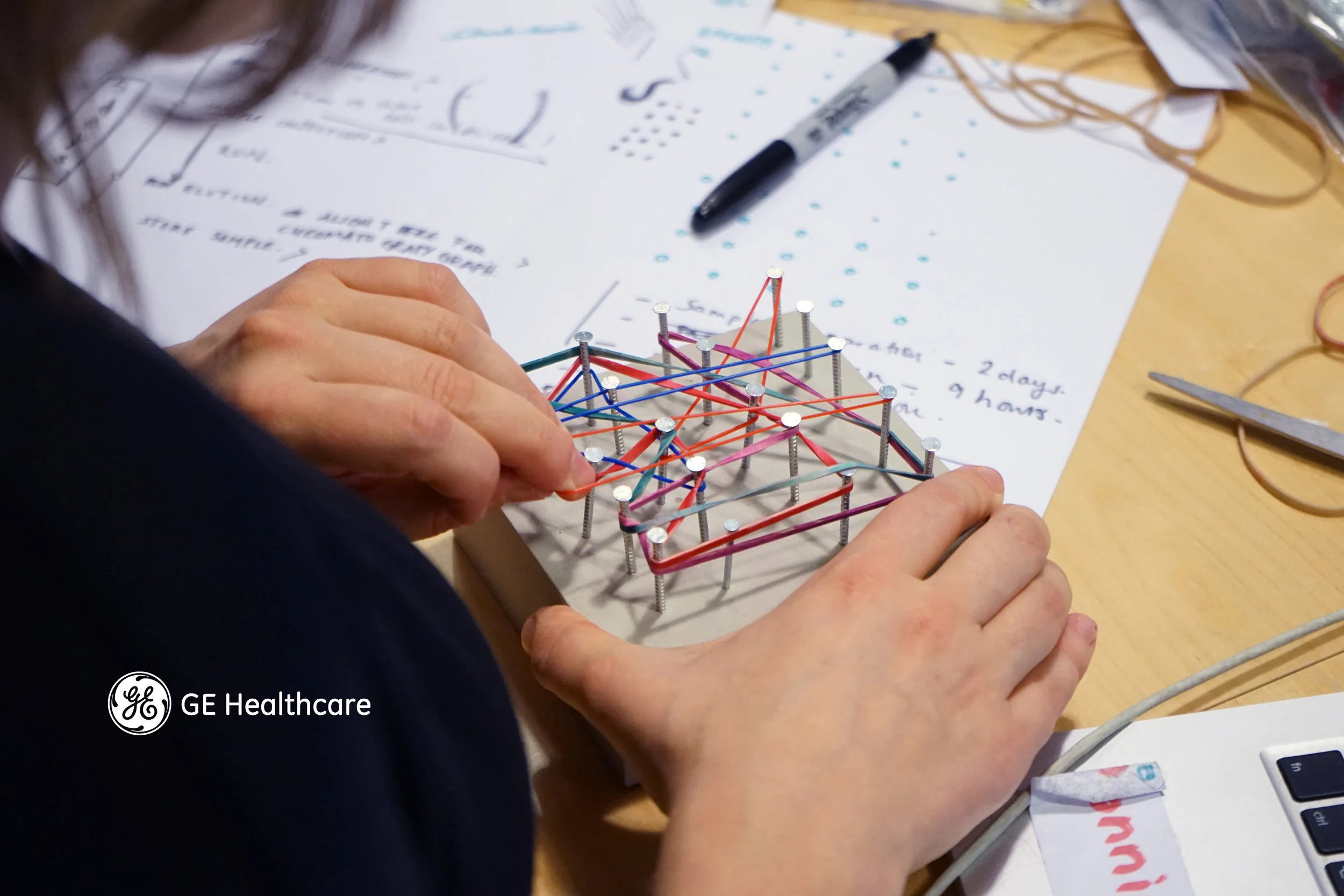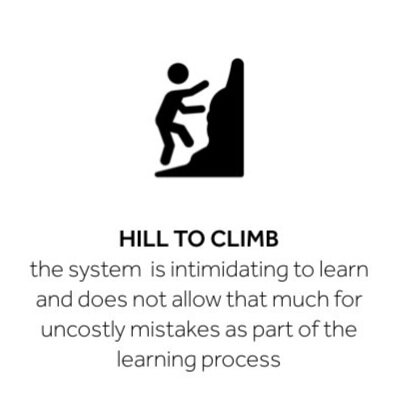Äkta Dot
EnCOURAGING EngagEMENT WITH The ComPLEXITY of Protein Purification through Learning by Doing
Professional Product Course, held at the Umeå Institute of Design in Collaboration with GE Healthcare
Team: Manu Revi, Joan Farré
Duration: 10 Week, Autumn Term 2018
My contribution: research, observation interviews, mockup and prototype making, user testing lead concept ideation, interface design.
OPPORTUNITY
The training process of using chromatography systems for protein purification in biochemistry research is a steep learning curve. Mastering a method using the equipment takes a while and can result in lots of costly equipment being broken along the way. This means researchers often stick to methods they know well, rarely explore more than one way of using the system and don’t fully trust it with the samples they take a long time to prepare. Meanwhile the digital and physical hardware are managed in separate locations which leads to confusion with which parts do what.
Introducing Äkta DOT
Äkta Dot is an interface system for beginners in chromatography which allows for a more intimate relationship with the complex hardware and digital systems of protein purification. Users can use the Dot to explore different hardware elements and settings and learn about them in their location in the systems. Users can also monitor the run while they do other tasks in the lab. Over time, this helps new biochemists build better confidence, knowledge and trust in using these complex systems in their research.
“Is there a way of encouraging beginners to establish a more explorative and intimate relationship with the complexity of a chromatography system through learning by doing?”
One dot, TWo modes
Probe mode - encourageS Engagement With the system over Need for Automation
Allows the beginner explore the different elements of the hardware based on their actual location and guides them through setting up their run. Encourages engagement with the system rather than automation.
Monitor Mode - Builds Trust with the System Remotely
Allows the user to monitor how the system monitor the system at different stages of the run through sound and visuals. Leaves the user in control of how they receive the notifications.
OPEN - allows for notifications when you are doing other tasks in the lab
MUTING - choice to mute notifications until you have time to listen
INTIMATE LISTENING - choosing to listen in to the system when convenient
The DOT visual language
How we got there…
Unraveling the complexity of chromatography
The challenge here was to design for specialists in a field for which we would not be able to reach the same level of knowledge. Working out to what extent our understanding of the science was important for us to create an interface was a learning curve in itself!
We began with a visit to GE Life Sciences department to which were introduced to the current systems and hard ware by representatives of the company. After this we also visited labs in which researchers were using protein purification in different ways.
We then conducted research with different researchers at the university in Umeå which gave us valuable insight from users who use chromatography systems in a variety of ways.
““I thought I would never learn the system, it looked so complicated.””
“‘I spend a lot of time preparing the sample. When it goes through the system I check that its working properly by listening to the sounds of the machine.’”
Task Analysis
We mapped out the different stages of the system, and how it fits into the full experience of most researchers. This helped us map user emotions to their work flow and identify opportunities within which we might be able to have real impact on how the system was used.
RESEARCH INSIGHTS
Why Beginners?
“How can we design an experience that guides non experts and beginners in building a better relationship with the system by enhancing learning and trust?”
EXPLORING The Tangible
During ideation we made a lot of rough mockups to explore different ideas and push our concepts outside of of the chromatography comfort bubble. These also helped us work with the issues that had been highlighted during our research in a more direct and experimental way.
Building Intimacy
THE HEART - Tangible artifact that ‘breathes’ according the the stages of the run
THE STETASCOPE - creating a caring doctor patient relationship between user and system
THE BABY MONITOR - allowing the user to trust the machine from a distance by providing the sound feedback of the process.
Probe To Explore
Mapping Methods
THE FRIDGE - a surface which allows you mapp settings on the surface of hardware
TANGIBLE SETTINGS - different ways of customising your own parameters to include/exclude settings
THE GUIDE MAP - simple visuals that show you your journey
WHAT I LEARNT
The project really gave me the opportunity to think about ways in which to quickly understand a very complex system, while trying to challenge it. I learnt a lot about the level of understanding we need to take in as designers but also to what extent established processes are often the result of years of parts being built on top of each other. Trying to understand the science of chromatography was by no means an easy task but through this projects I learnt to limit my determination to fully understand the topic I am designing for and seeing my non expert status as a design advantage rather than a hindrance.

























